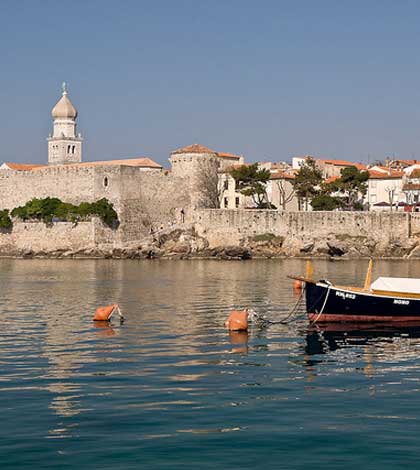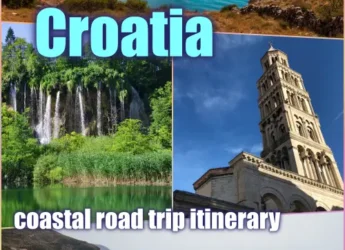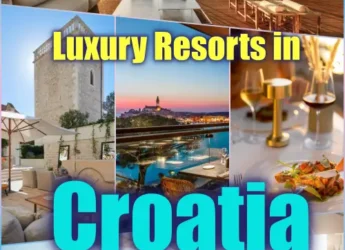Eight Croatia Islands

In the spring, summer and fall, Croatia sees many tourists – mostly from Europe but nowadays also from North America and Asia. They come to visit the towns but mostly everyone heads for the coast where you can enjoy beautiful beaches and the warm water. You can also rent sailboats to enjoy some of the Croatia islands and there are over a thousand of them!
Here is a list of the top eight Croatia islands to visit:
Krk is the number one choice and is often termed ‘the golden island’ and is very accessible and has a bridge to the mainland. The landscape is quite varied from being almost barren in the north to beautiful gentle bays in the south. Krk (Veglia in Italian) is Croatia’s biggest island, it became even more known when it was linked to the continent by a bridge, and because of this, is also among the most busy in summer months, as Germans, Italians and Austrians move over to its holiday houses, private rooms, camps and hotels. It might not be the most beautiful island in Croatia but it has good road connections and a well-organized traveling structure.

There are vineyards in the central part and of course on the coast you can enjoy all sorts of water sports from paragliding to scuba diving. This is a definite must of the Croatia islands to visit.
Krk town is located in the middle of the island, and is nowadays the administrative, political, economic and religious center of the island of Krk. Apartments in private accommodation and hotels are placed on the eastern side of the town. And here is also the old main city beach.
[colored_box color=”blue”]BAŠKA
Taking the road south on the Krk Island, you can find Baška, which has the island’s most beautiful beaches, a long crescent set below an impressive, barren range of mountains. It’s obvious why it became an extremely successful resort. The place is very stunning, and the swimming and landscapes greater than at Krk Town. Yet, there’s one caution in case you drop by and see in the summer season – vacationers are distributed towel-to-towel and what’s usually an attractive pebble beach becomes a struggle for your place under the sun. During summer months it is very important to organize holiday accomodations well ahead of time as the town swarms with tourists from all Europe. Hotel rooms are booked by late spring, and places to stay are hard to get in the shoulder seasons as well. [/colored_box]
Rab is just off the north coast of the country and has woods and forests so it has lots to offer for nature lovers. It is one of the greenest islands and has mild winters and nice warm summers, so you can enjoy your visit any time during the year.

Rab (Italian Arbe) lies between two big islands, Krk and Pag, and it is one of the most fine-looking islands on the whole Croatian coast. Most of the inhabitants live on the south part of the island, where there are many beaches and coves, pine trees and olives.
The northern part has high cliffs and less vegetation due to the northern wind sweeping the ground. But it has some interesting features, like the Lopar Peninsula with many sand beaches or Supetarska Draga with many coves and lagoons.
The main town Rab is famous for its four bell towers, and has like many towns in this area, a clear Venetian footprint, with many ancient buildings: the Loggia in Renaissance style, the Prince’s Palace built at first in Romanesque style but later restructured in Gothic style to be rebuilt in Renaissance style. Then there is the Cathedral of St Mary the Great, a Romanesque church made in 1177. The old town Rab is placed straight over the bay from the harbor. Narrow side streets go up from the three main streets concurrent to the harbor.
Next comes the Kornati which is actually about 130 islands, islets and reefs. Here you will find fig and olive trees as well as vineyards as well as rare trees and Mediterranean scrubs set in a landscape of limestone. The islands itself are uninhabited so you can visit pristine, unadulterated beauty.

[colored_box color=”grey”]
The Kornati archipelago is composed of nearly 150 among islands and islets, they cover 70 sq km, and a part of them are in the Kornati national park. The scenery is unusual, with all that deforested land, turquoise clear sea water and no inhabitants. There are no water sources on them islands, which explains why there is nobody living there and why there is no vegetation.
The Kornati islands are a must target for sailors, others can go there by booking an excursion boat from Zadar, Šibenik, Split. There are no official ferry boats to visit them.
[/colored_box]
 The island of Pag has the longest coastline of the islands and as such lots of coves, bays and beaches. The landscape varies from rocky hills to green valleys – again great for gapes and for olives. Here there are great places to enjoy camping and the outdoors.
The island of Pag has the longest coastline of the islands and as such lots of coves, bays and beaches. The landscape varies from rocky hills to green valleys – again great for gapes and for olives. Here there are great places to enjoy camping and the outdoors.
Pag is a 60 km long barren island connected to the mainland with a bridge, with many bays, coves and beaches, which are never full of visitors, like on other Croatian islands. The main town of the same name as the island is located in the center of the island. Pag town is made of many narrow streets, with many artisan lace shops and the famous Pag cheese shops, beautiful beaches just in front of the town.
The greenest island is Mljet where you can feast your eyes on all things green – fields, forests and vineyards. There are even two salt lakes as well as an old Benedictine monastery.

Mljet is so seductive with its greenery that they made a National park on it. You can find there many forests, and the lush vegetation is a clear sign of a fertile soil for vineyards. There are no large resorts in this unspoiled piece of earth. The island of Mljet in the Southern Dalmatia, outside of Dubrovnik and Korcula, is 37 km long. On Mljet there are many coves and bays, and the island is one of the best places for diving.

Cres, like Krk is one of the largest islands and here you can find lovely hills and pebby beaches and bays. There is also a very deep fresh water lake so watersports are ideal for visitors to this island.
Brac is also large and has pine and fig trees as well as crystal clear water to enjoy watersports. The Vidova Gora mountain is the highest in the area.
Korcula is the most populated of all the islands and is only separated by a narrow strait from the mainland. The capital is called Korcula or ‘Little Dubrovnik’. They even have a cathedral.
















